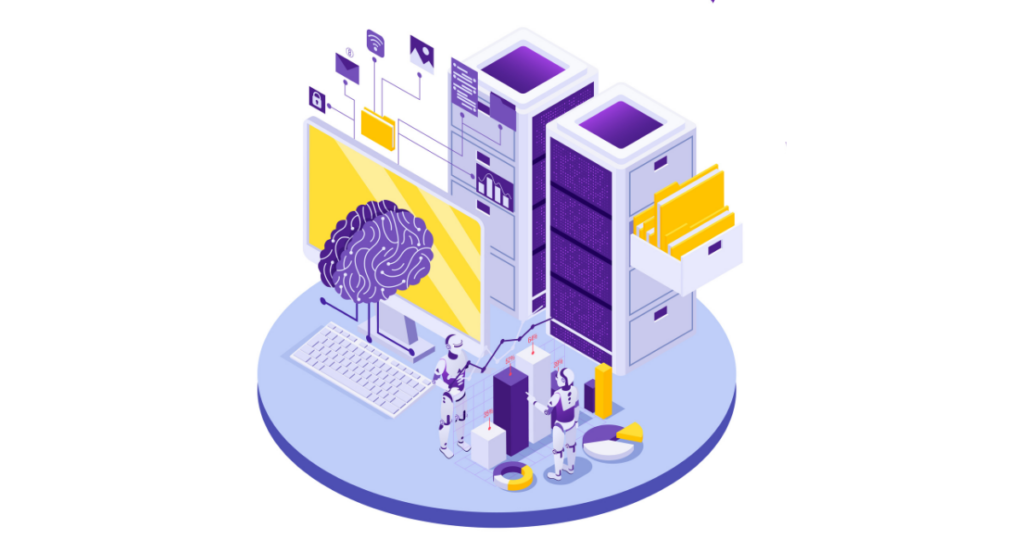While working in small teams, in any software project, the devs (developers) and the QA professionals should have a good balance of responsibilities.
Both roles are uniquely different and bring vital skills to the table, with the devs putting their focus on building the software and QA experts ensuring that it adheres to quality standards before being released.
This delicate balance not only assures better product results but also fosters a collaborative, efficient workflow.
Hence, effective task distribution or sharing of responsibilities between two such teams is intrinsic to optimal performance and productivity in a small team setup.
Importance of Balancing Developer and QA Roles

Understanding the dynamics of small teams
When working in small teams, individuals play multiple roles; hence, there is the need to establish and balance what roles are played by the developer as opposed to the QA.
Small teams are extremely dynamic, and the need for flexibility and adaptability is almost a requirement. However, this very flexibility could result in confusion, overlapping of tasks, and futile utilization of time and resources if roles are not clearly demarcated.
Roles ought to be correctly understood and structured so that there is no cohesion, and each team member is focused towards core competencies without redundancy.
Impact of balanced developer and QA roles on collaboration and workflow
Achieving a balance between developer and QA roles significantly enhances team collaboration and the overall workflow. Well-defined roles allow for smoother transitions of tasks, clearer communication channels, and more predictable project outcomes.
For developers, it means focusing deeply on building features without being sidetracked by unexpected testing duties. For QA professionals, it allows for a more structured testing process and timely feedback, essential for agile environments where quick iterations are the norm.
This balance ultimately leads to faster development cycles, better quality products, and a highly motivated team.
Establishing Clear Boundaries between Developer and QA Roles

Defining roles and responsibilities
In small teams, the role of the developers and the QA has to be correctly defined. For example,
- Developers should focus on writing code and implementing new functionality, then test whether it works for the first time.
- The QA specialist shall write the test cases, test the software systematically, and check whether the quality of the software is good enough before reaching the client.
This delineation is, therefore, instrumental in preventing overlaps and utilizes the strengths of each team member.
Setting expectations for each role
While defining the roles is very important, equally important is that one clearly spells out the expectations from every position.
Expectations from a developer may relate to coding standards, proper documentation of the same, and participating in code reviews.
For the QA members, these could be in regard to good coverage of testing, ensuring that issues get timely reported, and collaboration with the developers to arrive at a solution.
Setting such expectations does not just make the role more well-defined but also creates accountability to ensure that each team member can contribute optimally towards the success of a project.
Promoting Open Communication and Collaboration
Every project is incomplete without effective communication and collaboration between the developers and the QA team members; the importance of this aspect is greater in small teams where roles tend to blur, and resources are apparently limited.
Strategies for effective communication between developers and QA
Regular meetings can be held to outline clear expectations from both sides to the other in terms of effective interaction between developers and QA professionals.
It is the time consumed not only for progress and issue-bating but also for common planning and evaluation. Reach a mutual understanding regarding every role and its importance, and ensure each member realizes where he or she stands in the bigger picture.
Apart from that, facilitate the informal channels of communication, like chat groups and rapport-building, to ensure a much more streamlined flow of ideas and quick resolution of issues.
Tools to enhance collaboration in small teams
The right set of tools can significantly enhance team collaboration. Project management and communication platforms like Jira, Slack, and Asana help in tracking tasks, sharing updates, and centralizing all documentation.
Version control systems such as Git can assist in managing changes in the codebase but also help both developers and QA observe the modifications in real-time.
Encouraging cross-functional understanding
Workshops or regular trainings that bring the two, developers and QA teams, together can help build much-needed empathy and knowledge sharing.
Doing cross-training of team members in the different aspects of the software development lifecycle helps create understanding for each other's challenges and workflows.
It will not only reduce conflict, but also has the added advantage of making the team bond as one.
Finding the Right Developer to QA Ratio
The balance between developers and QA specialists in a team can dictate the efficiency of the development process and the quality of the final product.
Factors to consider when determining the ratio
Several factors influence the optimal developer to QA ratio, including the complexity of the project, the skills of individual team members, and the specific stages of the development lifecycle.
The nature of the product and the expected delivery timelines also play critical roles in deciding this balance. A higher developer to QA ratio may be acceptable in early development phases, but as you move towards release, a higher QA presence may be necessary to ensure a polished product.
Ideal ratio for efficient team dynamics
While this may not be a one-size-fits-all answer, the benchmark in the industry is about one QA for every three to four developers.
The ratio basically makes sure that the developers get enough bandwidth to keep developing without having to wait too long for feedback, yet QA can sweep the grounds adequately for testing without getting overwhelmed with work.
It thus becomes very important in small teams to adjust this ratio by real-time feedback and project demand in pursuit of product quality and productivity.
Ensuring Productive Team Roles
Types of roles in a productive team
Mostly, roles overlap in a small team; individuals do many things. However, well-defined roles will help in streamlining processes and avoiding redundancy. Normally, these roles are categorized as follows -
- Developers - Their tasks involve development of the software; they are the coders.
- It is the QA Professional's responsibility to test and ensure that software contains all the specified requirements before it goes live.
- The team leads guide and direct that both the developers and the QA professionals are aimed at in the same direction.
- The product managers look after the project from commencement to the end, ensuring the final product meets customer expectations.
Enhancing productivity through role clarity
Clear delineation of roles substantially boosts productivity by allowing team members to specialize and develop expertise in their specific sectors. When roles are clear:
- Communication improves as each member knows whom to approach for specific issues.
- There's a reduction in task redundancy, saving time and reducing frustration.
- Team members can focus on their strengths, leading to faster and more robust development and testing cycles.
Understanding Responsibilities of Developers and QA Professionals
Developer responsibilities in agile environments
In agile small teams, developers have a dynamic role that includes:
- Design and implementation: Turning requirements into practical, functional software.
- Iteration: Regularly revising and improving code in response to feedback and test results.
- Collaboration: Working closely with both QA professionals and other developers to refine software functionality.
- Problem-solving: Quickly addressing issues that arise during testing phases to prevent delays in deliverables.
QA roles and responsibilities in small teams
QA professionals in small teams handle crucial aspects including:
- Test planning and execution: Developing effective testing strategies tailored to each development phase and ensuring rigorous execution to catch defects.
- Documentation: Clearly documenting tests and bugs to ensure reproducibility and to inform necessary changes.
- Quality gatekeeping: Acting as the final checkpoint before software reaches the client, ensuring it meets all quality standards.
- Collaboration: Working closely with developers to understand features and provide feedback that shapes the final product.
In small teams, balancing these responsibilities ensures that software is not only built but also meticulously tested, thus matching or exceeding client expectations.
Collaboration Strategies between Developers and QA Professionals
How QA typically collaborates with developers
Efficient workflow and quality product development require the collaboration of QA professionals with developers.
Quite often, QA works in close collaboration with developers through regular meetings and joint sessions to discuss requirements, project timelines, and potential issues.
They also apply collaborative tools like JIRA, Confluence, or Slack to track bugs, document test cases, and feedback in real-time.
QA professionals also work on pair testing, working directly with developers across new features or bug fixes to test them, and give immediate feedback to accelerate the development cycle.
Benefits of collaboration in product development and testing
Collaboration between QA and developers brings numerous benefits including:
- Enhanced Product Quality: Continuous interaction ensures that defects are identified and resolved early, leading to a more stable release.
- Faster Time to Market: Collaborative efforts reduce the back-and-forth usually required when teams work in silos, thereby accelerating the testing and development process.
- Reduced Miscommunications: Regular communication helps clarify requirements and minimize misunderstandings, ensuring that everyone is on the same page.
- Increased Team Morale: Working closely fosters a sense of teamwork and understanding, boosting overall team morale and productivity.
Why Separate Teams for QA and Development?
Advantages of distinct QA and development teams
Creating distinct teams for QA and development can provide several strategic benefits. Dedicated QA teams can focus solely on testing, which means they develop deep expertise in finding and preventing bugs, leading to higher quality and reliability of the final product.
Meanwhile, developers can concentrate on building features without the interruption of switching tasks between coding and testing.
This separation also allows for specialization of skills, whereby each member of the team can become more proficient at their specific roles, ultimately enhancing the team's overall efficiency and effectiveness.
Key reasons for maintaining separate teams
Separate QA and development teams also facilitate better accountability and clearer role delineation. When problems arise, it’s straightforward to identify whether they stem from coding or testing, which simplifies debugging and resolution procedures.
Moreover, having distinct teams helps in scaling operations more effectively as each team can grow independently based on the specific needs of the project.
It also prevents any potential conflict of interest where a developer might be tempted to overlook minor bugs to meet deadlines.
Essentially, this structure supports a more rigorous development process and ensures that quality checks are not compromised in the rush to push new features live.
Book a Demo and experience ContextQA testing tool in action with a complimentary, no-obligation session tailored to your business needs.
Conclusion
In small teams, achieving an effective balance between developer and QA roles is crucial for the smooth execution and success of projects. Developers and QAs need to work closely, understanding their specific duties while supporting each other's tasks.
Remember, collaboration and open communication are key elements. Adopting agile methodologies, cross-training team members, and setting clear expectations can foster a heightened level of productivity and job satisfaction.
By honestly evaluating team dynamics and making adjustments to work distribution and communication strategies, small teams can ensure that both developers and QA professionals have the capacity and support to perform optimally.
Moreover, this balance between roles contributes to the overall agility and efficiency of the team, ultimately leading to the successful delivery of high-quality software products.
Also Read - Lessons from the Trenches: Real-Life Stories of Developer and QA Collaboration
We make it easy to get started with the ContextQA tool: Start Free Trial.
